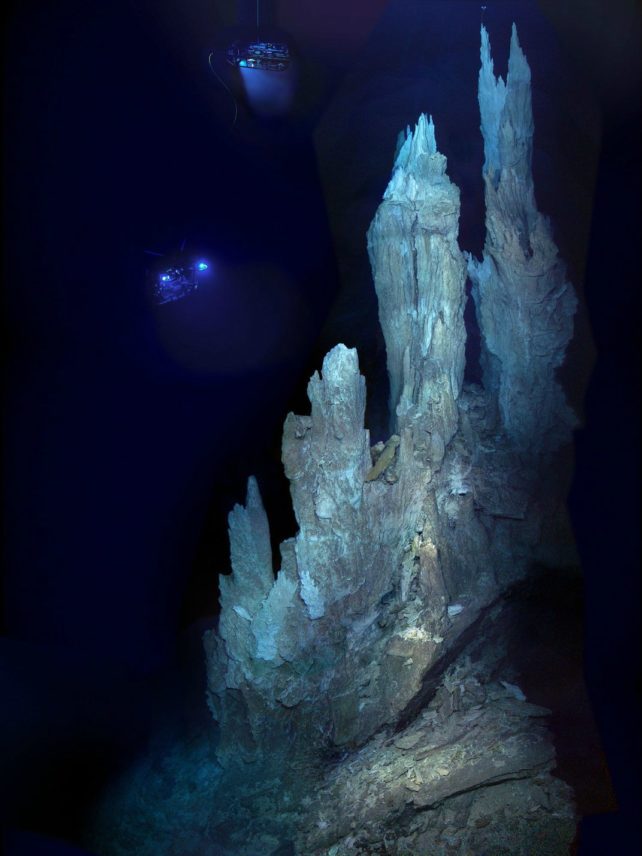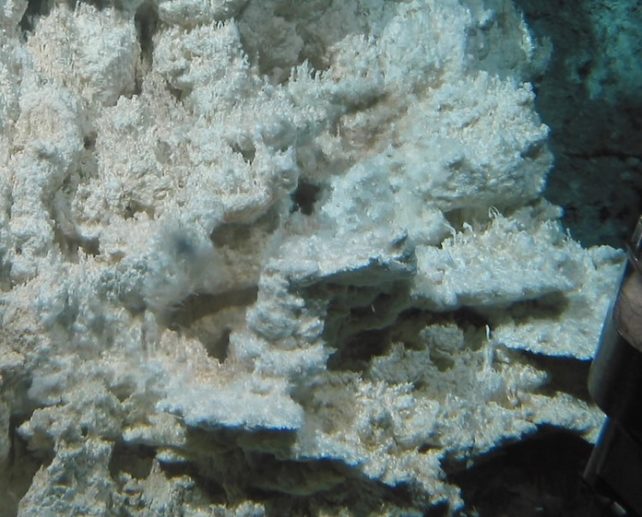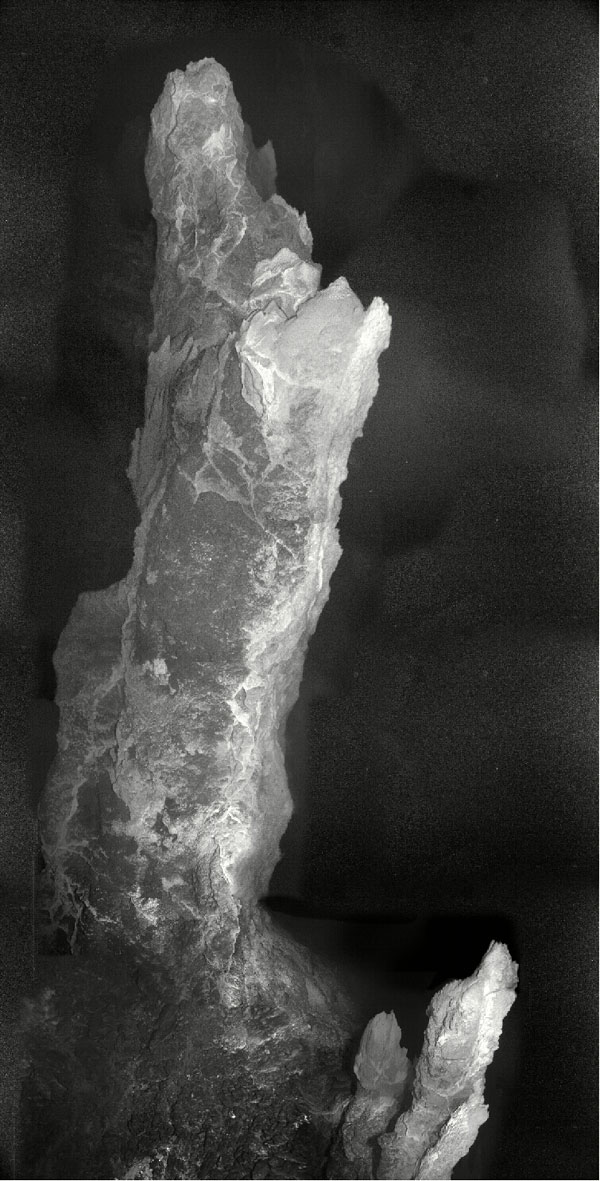Near the top of an underwater mountain west of the Mid-Atlantic Ridge, a jagged landscape of towers rises from the darkness.
Their creamy carbonate walls and columns appear ghostly blue in the light of a remotely operated vehicle sent to explore.
As tall as they are Small slabs the size of toadstools form a large monolith 60 meters (almost 200 feet) high. This is Lost City.

It was discovered by scientists in 2000. More than 700 meters (2,300 ft) below the surface, The Lost City hydrothermal field is the longest known vent environment in the ocean. Nothing else like it has ever been discovered.
For at least 120,000 years and possibly longer, the upwelling mantle in this part of the world has reacted with seawater, pumping hydrogen, methane and other dissolved gases into the ocean.
In the cracks and fissures of field vents, hydrocarbons feed novel microbial communities even without oxygen.

Chimneys emit gases as hot as 40 degrees Celsius (104 °F) Snails and crustaceans abound. Large animals such as crabs, shrimps, sea urchins and eels are rare, but still present.
Despite the extreme nature of the environment, it appears to be teeming with life, and researchers believe it is worth our attention and protection.
Although other such hydrothermal fields may exist elsewhere in the world’s oceans, only one remotely operated vehicle has been found so far.
The hydrocarbons produced by the Lost City’s vents do not originate from atmospheric carbon dioxide or sunlight, but from chemical reactions in the deep ocean.
Since hydrocarbons are the building blocks of life, this opens up the possibility that life could have originated in such a habitat. And not just on our own planet.
“This is an example of the kind of ecosystem that could be operating on Enceladus or Europa right now,” microbiologist William Braselton said. said The Smithsonian In 2018, it refers to the moons of Saturn and Jupiter.
“And maybe Mars in the past.”
Unlike underwater volcanic vents Black smokersIt’s also named the first possible habitat, the Lost City’s ecosystem not dependent on the heat of magma.
Black Smokers often produce iron and sulfur-rich ores, whereas the chimneys of the Lost City do. Up to 100 times More hydrogen and methane.
Lost City’s calcite vents are much larger than black smokers.

Named after the Greek god of the sea, Poseidon is the tallest of the monoliths and stretches over 60 meters.
Northeast of the tower, meanwhile, is a rock with short cracks. University of Washington researchers to describe Cavities here form “clusters of smooth, multi-pointed carbonate growths that extend outward like the fingers of crusted hands” as they ‘weep’ with fluid.
Unfortunately, scientists aren’t the only ones beckoned by that extraordinary landscape.
In 2018, Poland was reported to have won the rights Deep sea mine around The Lost City. Although there are no precious resources to mine in the actual thermal field itself, destroying the city’s surroundings can have unintended consequences.
This is the Lost City, a towering ecosystem in the middle of the North Atlantic. It is absolutely unique, nowhere else on earth. Anyone want to destroy it? There is nothing you can do about it. No laws. No consequences. Welcome to the high seas… pic.twitter.com/mdG5wOsr5h
— High Sea Science (@RebeccaRHelm) August 22, 2022
Scientists warn that any plumes or discharges triggered by mining could easily wash away significant habitat.
So some experts call The Lost City is set to be listed as a World Heritage Site to protect the natural wonder before it’s too late.
For tens of thousands of years, the Lost City has stood as a testament to the enduring power of life.
It would be like us to sabotage it.
An earlier version of this article was published in August 2022.